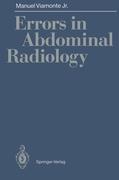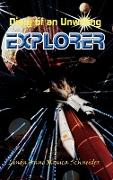- Start
- Errors in Abdominal Radiology
Errors in Abdominal Radiology
Angebote / Angebote:
There are many diagnostic imaging techniques for the radiological exarmna tion of the abdomen. Noninvasive methods include supine and upright views of the abdomen (sometimes fluoroscopy and decubitus films), posteroanterior (PA) views of the chest, contrast studies of the alimentary tract, ultrasonogra phy (US), scintigraphy, computed tomography (CT), and magnetic resonance imaging (MRI). Biopsy under fluoroscopic control and angiography are inva sive techniques. Most of the errors described in this book are related to faulty interpretation, others are due to improper technique. For example, a patient with acute abdominal pain secondary to a perforated hollow viscus may be studied only by supine and upright views of the abdomen that do not include the subdi aphragmatic regions. A complementary PA view of the chest or a left lateral decubitus film would, however, detect free air in the pentoneal cavity that the incomplete two-film study might have missed. Errors of techmque are due to under- or overexposure, long exammation times or an uncooperative patient (both of which can induce motion artIfacts), improper processing, and failure to perform the proper standard noninvasive or mvaSlVe modalitIes for examining the hollow viscus and the solid organs of the alimentary tract. In order to visualize the diaphragm and the supra- and mfradiaphragmatIc spaces, frontal and lateral chest roentgenograms complement the standard views of the abdomen. Fluoroscopy IS of great value m assessing diaphrag matic motion as well as being essential when contrast media are utilized.
Folgt in ca. 5 Arbeitstagen




